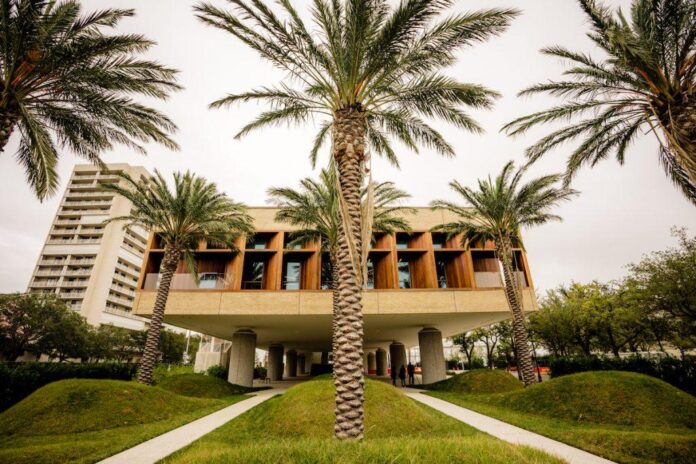Historians estimate that 45 percent of enslaved Africans entered the U.S. through Gadsden’s Wharf in Charleston, South Carolina. But until recently, the site has been conspicuously absent of plaques, memorials, or any other indications of its past. Few knew the significance of the site at all.
Finally, that has changed. Now located at Gadsden’s Wharf is the International African American Museum (IAAM), an institution dedicated to the untold stories of the African American experience.
IAAM opened to the public on June 27, effectively concluding a 20 years of planning, fundraising, and construction efforts undertaken in Charleston and beyond. For Tonya Matthews, the museum’s inaugural president and CEO, it was worth the wait. “Every time I’ve looked at what we were discussing, say, five years ago, what I realize is that, if the museum had opened at any other time, it really would have been a different space,” she told Artnet News earlier this year.
“Ten years ago,” she added, “we weren’t actually going to be located at the site of Gadsden’s Wharf—and that of course has become a signature and grounding point for us.”

Gadsden’s Wharf viewed from the International African American Museum. Courtesy of IAAM. Photo: Greg Noire.
The building itself embodies the memorial long missing from the site. Designed by the late architect Henry Cobb, IAAM sits atop 18 one-story-tall pillars, its body suspended above the ground in a gesture of respect for the slaves that once walked the land below.
“As the place where thousands of Africans from diverse cultures first set foot in North America, Gadsden’s Wharf is not just the right place to tell this story; it is hallowed ground,” Hood, who died in 2020, once said. “The special design challenge of the museum is to build on this site without occupying it.”
Underneath the elevated building are two sites for reflection, both conceived by the MacArthur “genius”-winning landscape designer Walter Hood: a sculptural “Tide Tribute” to the enslaved Africans that passed through Gadsden’s Wharf, and an ethnobotanical “African Ancestors Memorial Garden,” replete with indigenous plants from West Africa, the Caribbean, and South Carolina’s Lowcountry.

Inside the International African American Museum. Courtesy of IAAM. Photo: Greg Noire.
Inside, the 100,000-square-foot building boasts nine exhibition spaces and a collection of some 700 objects, almost all of which are on view. That includes historical artifacts like slave shackles and old Mardi Gras costumes, as well as art by Jacob Lawrence, Kara Walker, and Carrie Mae Weems, among others. The mix of materials, Matthews said, instantiates one of the museum’s core tenets: “the constant interweaving of trauma and joy.”
“[It’s] not trauma in the exhibit to the left and joy in the exhibit to the right, but much more like the African American experience itself, which is a constant weaving,” the IAAM head explained.
See more images from the newly opened International African American Museum below.

An exterior view of the International African American Museum in Charleston, South Carolina. Courtesy of IAAM. Photo: Jim Sink.

A “Tide Tribute” to the enslaved Africans that passed through Gadsden’s Wharf, located in the International African American Museum’s gardens. Courtesy of IAAM. Photo: Greg Noire.

An interior view the International African American Museum. Courtesy of IAAM. Photo: Greg Noire.

An installation in the International African American Museum. Courtesy of IAAM. Photo: Greg Noire.

























